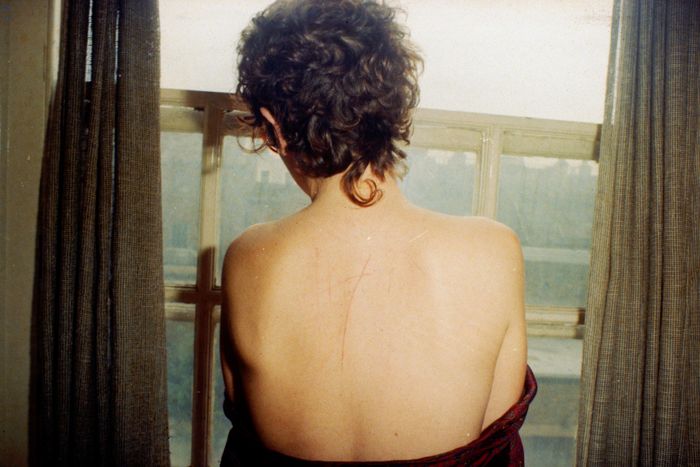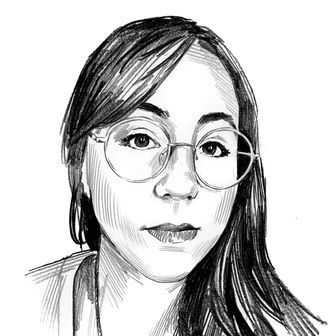
We tend to talk about art and politics as if the two were ingredients in an unsteady emulsion, distinct elements blended together in different proportions in hopes of creating some kind of stable whole. But All the Beauty and the Bloodshed, a documentary about photographer Nan Goldin from director Laura Poitras, offers a different perspective on this relationship. To treat art as something that can exist separately from the world it came from, the movie insists, is to turn it into a tool for the laundering of evils. Just look at the Sackler family, owners of Purdue Pharma, the company responsible for manufacturing and pushing OxyContin onto the world as a safe means of pain management. Their staggering wealth owes a lot to that highly addictive drug, and for years their names adorned plaques in august institutions like the Louvre, the Tate, and the Guggenheim — all those murmuring patrons passing right by to look at displays supported by people who played a key role in the opioid epidemic. There’s an electric thrill the first time we see Goldin and fellow activists break the hush of the Temple of Dendur gallery by shouting slogans and throwing pill bottles into the reflecting pool. It’s as though they’re puncturing the bubble of respectability the Sacklers were allowed to surround themselves with and letting real life rush in.
Goldin, a celebrated photographer best known for an ever-evolving slideshow called The Ballad of Sexual Dependency, which draws from her personal experiences over what’s now become decades, has never had any use for respectability. All the Beauty and the Bloodshed, a portrait of an artist and activist, tracks Goldin from teenager in revolt to outsider chronicler to art-world giant to Purdue protester. But it’s not a biodoc in any standard sense, thank God — Poitras, whose own career has revolved around the War on Terror, is much too ambitious a filmmaker to box herself into such an inherently stuffy format. All the Beauty and the Bloodshed is instead an incandescent work that examines Goldin’s personal life, her evolution as an artist, and her later turn toward harm-reduction advocacy, and understands them to be part of the same journey. At the film’s center is always Goldin’s determination to pull back the curtain of propriety and to show all the ugly, glorious truths behind it, whether with her childhood, with sexuality, with the stigma attached to sex work, with the AIDS crisis, or with the polite illusion that prescription drugs can’t destroy lives.
If Goldin and Poitras seem like an odd pairing, the tension that comes from their collaboration is what gives All the Beauty and the Bloodshed its vitality. (Goldin’s a producer on the film and was given a say in what material from her interviews made the final cut.) Goldin isn’t a subject prone to self-mythologizing, and while Poitras doesn’t exactly take on the role for her, she sees in Goldin’s life something sweeping and epic. It begins and ends with Goldin’s older sister, Barbara, who was rebellious and queer, institutionalized by their parents, and died by suicide at 18, and whose words, from her hospital records, gave the film its title. In between is a wealth of Goldin’s photography and other archival material that follows her from foster care to living with drag queens in Boston, and then on to the Bowery in the ’70s and ’80s and into a scene teeming with hard drugs and big personalities like Cookie Mueller and Vivienne Dick and Maggie Smith, supporting herself with go-go dancing and, later, sex work, which she speaks about for the first time in the film.
Goldin’s chronicle of this legendary stretch of New York history serves as an indirect self-portrait, and at other times a very direct one. After a tumultuous relationship with a man named Brian ended with him beating her so badly he broke her orbital bone, she took photographs of her own battered face. The pictures were another chronicle of difficult truth, and another challenge to stigma. But they also, she shares, kept her from going back to him. As All the Beauty and the Bloodshed cuts between the photographic record of Goldin’s life and her activism, it emphasizes that allowing, and even requiring people to face oft-hidden truths has power in itself. Goldin founded the group P.A.I.N. after being prescribed Oxy for her wrist pain in 2014 and developing an addiction that consumed her for the next few years. The work we see the group doing culminates in a court-mandated hearing in which three members of the Sackler family were made to sit and listen while opioid survivors addressed them directly. When Goldin and her cohort fling flyers in the form of prescriptions from the spiral ramp inside the Guggenheim to rain down into the central atrium, it’s as beautiful an action as it is incendiary. Of course it is — it’s a work of art.
More Movie Reviews
- Anyone But You Has More Sex on Its Mind Than Your Average Rom-Com
- An Exploited Neighborhood, Seen Through Children’s Eyes
- Challengers Is Almost a Sexy Movie





